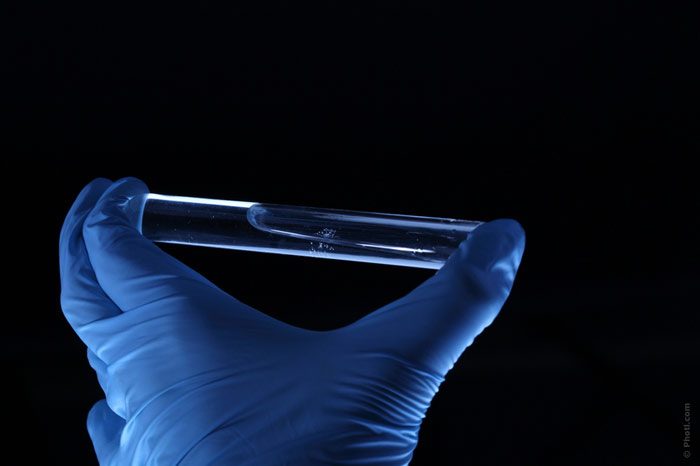Fiction has always enjoyed immense popularity because it allows people be part of a thrilling reality at least in their fantasies. Besides, fiction has always been the locomotive of progress. Indeed, a lot of technologies, which were recently described only by science fiction authors, have now become real.

1. Removing or replacing memory

Neuroscientists have recently found that the brain is not a biological hard drive where memories are recorded forever. It is now assumed that memories are recreated again due to the process of memory reconsolidation, rather than recorded.
When one thinks of some event, it essentially simulates the situation anew in the brain, based on your current mood and emotions. That is why the unpleasant and traumatic memories become less bright in comparison to the initial emotional reaction. The specific inhibitor protein (called “PKMzeta”), which is able to block unwanted traumatic memories, has just been discovered.
The researchers have also discovered how to hack the process of memory reconsolidation to change the processed information considerably, using the power of suggestion. One psychologist used this technique to convince the participants of the experiment that they had committed an imagined crime.
2. A photonic molecule

Scientists have “accidentally” created “a photonic molecule” that was previously thought impossible since photons (particles of light) have no mass. By creating a unique environment, in which photons interact with each other strongly (as opposed to passing through each other in normal natural conditions), they were able to get a photonic connection and create a new (yet subatomic) form of matter made of light.
The above-mentioned “unique transmitter” is composed of clouds of metal atoms, cooled to near absolute zero, but according to professor of physics Mikhail Lukin from Harvard University, the result will soon be compared with lightsabers from the “Star Wars”.
3. Artificial sperm and eggs

Scientists have long been trying to create a viable technology for the production of artificial human eggs and sperm. In 2014, in Cambridge, the researchers were able to reproduce the “fetus” cells that can develop further with the use of human stem cells.
In June 2016, Nanjing Medical University published a study about the semen obtained from the stem cells of rodents during an experiment. It proved to be able to fertilize mice. One can assume that bioengineered organisms will appear during the life of the current generation.
4. Bringing the dead to life

Although it sounds like a terrible apocalyptic science fiction, a researcher from the University of Arizona, Peter Rea, initiated the process of body revival, whose temperature was just 10 degrees Celsius, which had no brain activity, pulse or blood flow, but demonstrated all the signs of death instead.
The body was induced into “therapeutic hypothermia” in which the whole blood in the body was replaced with saline. Under this condition, metabolism stops and doctors can work without the threat of oxygen deficiency that damages tissues. When the blood was replaced and the body was heated to 30 degrees Celsius, the heart suddenly started beating.
5. Creating black holes

In a recent experiment, physicist Jeff Steinhauer used sound waves to create an imitation of “a black hole the size of a lab” to prove a number of hypotheses about such objects. This “sound hole” was created by cooling and then heating helium rapidly to create a barrier which must be impermeable to sound waves.
The experiment proved Hawking’s theory of radiation. 42 years ago, he suggested that a black hole does not absorb all the energy; it emits photons (the so-called Hawking’s radiation). Steinhauer found that phonons partially leaked from his artificial black hole.
6. Cloning dinosaurs

It is now established that dinosaurs have a bird’s origin. Modern birds and chickens are one of the greatest examples of the evolutionary process for thousands of years. During a really unusual experiment, the researchers from Yale and Harvard have created a chicken embryo with the head resembling that of a dinosaur. The researchers from the University of Chile have recently managed to repeat this process with chicken legs.
7. Liquid armor

In Poland, Moratex research center managed to improve the technology, which has been developed since 2010. It created the armor, which contains liquid rather than the traditional tightly bound fibers. It seems to challenge the laws of physics!
Unlike conventional liquids, which change the chemical structure when exposed to pressure or temperature changes, the so-called “non-Newtonian” liquid changes its properties to get instantly solidified. The shock wave it receives is scattered over a large area.
8. A personal holographic device

Although the idea of a pocket-size device that can project holograms may seem very similar to the Star Trek movie, a few companies have already introduced this concept into existing smartphones. Today, the hologram is created using additional materials or devices in the form of a pyramid which is placed on the screen of the smartphone lying on a flat surface.
The mobile industry is going to improve the technology. The researchers from Harvard University have created a new type of hologram using polarized light, which they call “meta-surfaces”. This invention loses much less light than a typical generated hologram, which means a much better picture quality.
IBM believes that the technology of 3-D human video broadcasts will be started on the market within 5 years. It will display the image of a person over the phone screen when calling.
9. Invisibility

For many years, the scientists from the University of Rochester have been working on the technology of light waves diffraction around an object with the help of lenses. They have recently moved to the digital version of the same technology, and at the moment they can make almost any object disappear, but so far only on the display, located in front of the object.
To create a true invisibility cloak, one will have to make it of displays. However, it is worth noting that many companies are now actively developing flexible, ultra-thin displays.










